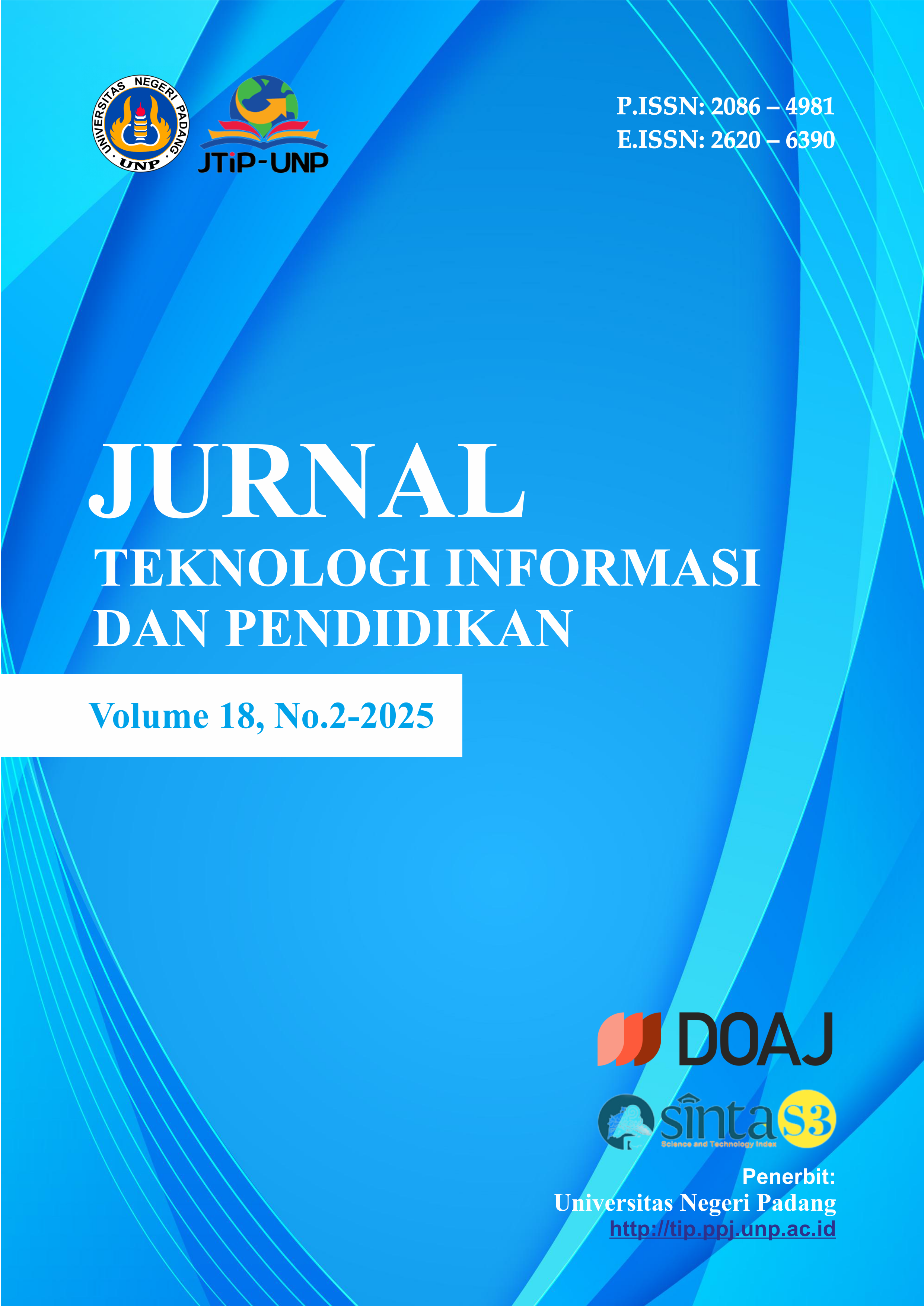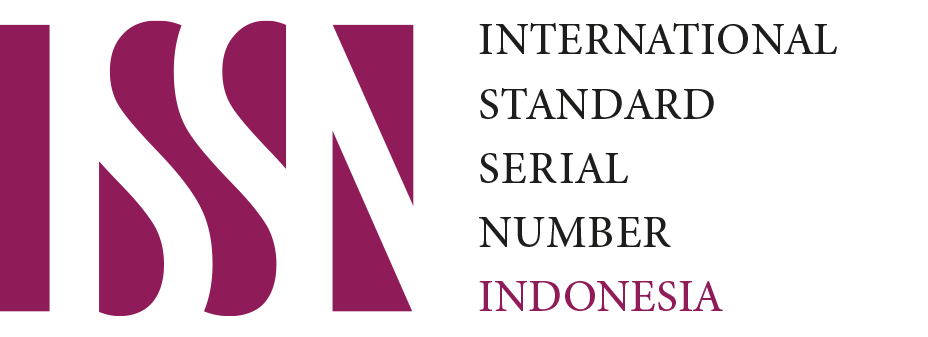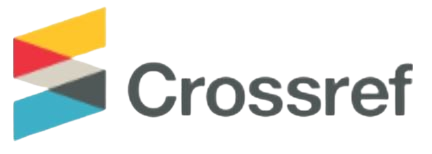Optimization Analysis of Mig Welding Technique Learning Through Artificial Intelligence-Based Weld Defect Analysis: A Comparative Study of Monica AI, Claude, And Perplexity
DOI:
https://doi.org/10.24036/jtip.v18i2.1065Keywords:
Artificial Intelligence, Monica AI, Claude, PerplexityAbstract
ABSTRACT
This study aims to examine efforts to optimize MIG welding technique learning through the use of artificial intelligence (AI). This study compares three platforms: Monica, Claude, and Perplexity. The results were then evaluated using expert judgment. The background to this research stems from the difficulty students face in recognizing various types of defects in welding results, which results in decreased joint quality and a poor understanding of the welding process as a whole. This study employed a comparative experimental method involving expert validators to validate the analysis results. Three images of MIG welding defects were analyzed separately by the three AI platforms, and the identification results were validated by welding experts. Based on the findings, Perplexity proved to have the highest accuracy in identifying defects, followed by Monica, while Claude performed the lowest. These findings indicate that AI integration can accelerate the identification process, simplify analysis, and make a positive contribution to welding technique learning. However, the study also revealed limitations, particularly related to the use of complex technical language and local contexts that AI has not yet fully accommodated. Therefore, it can be concluded that the application of AI, specifically Perplexity, has the potential to be an effective innovation to support the welding learning process in educational settings.
References
C. Sutowo and I. Budiawan, “Analysis of the Effect of Tig and Mig Welding on Welded Joints with SS316 and SS304 Materials”.
S. B. Handana and R. E. Pramitasari, “Tensile Strength Analysis of Smaw and Mig Welding of St 41 Steel Using V and X Weld Variations”.
G. I. Huka, L. S. Loppies, J. Matheus, A. D. Wilujeng, and A. Hamid, “The Effect of Gas Metal Arc Welding (GMA) Current Variations on the Mechanical Properties of Seamless Pipes.,” vol. 1, no. 3, 2023.
P. Diah Larasati et al., “Improving the Quality and Quantity of Welding Production Using MIG Welding Machines at the Rahman Jaya Welding Workshop in Gedawang Village, Banyumanik District, Semarang City” JPkMN, vol. 5, no. 2, pp. 2057–2063, May 2024, doi: 10.55338/jpkmn.v5i2.3140.
T. Surawan et al., “Training and Application of MIG Welding Machine Technology in Repairing Metal Plates to Become Skilled Workers in the Automotive Industry at SMK Nasional Depok, West Java” Dedikasi, vol. 3, no. 1, pp. 67–76, Dec. 2022, doi: 10.31479/dedikasi.v3i1.204.
R. N. Maret, S. Syaripuddin, and F. B. Susetyo, “The Effect of MIG Welding Speed on SC-80 Pipes on Microstructure and Hardness with 1g Welding Position,” JKTM, vol. 4, no. 2, pp. 76–80, Sept. 2023, doi: 10.52447/jktm.v4i2.1774.
B. Sutijo, Z. Hilmy, F. T. Adi, and T. Susilo, “Analysis of Welding Defects (Cracks) in Butt Weld Joints The Influence of Crane Pedestal Welding on the WTIV Project (Wind Turbine Installation Vessel),” 2025.
A. Agustina and Y. Suharya, “The Application of Artificial Intelligence (AI) Technology in the Field of Education Towards Indonesia's Golden Generation 2045,” vol. 16, 2024.
G. Yulianti, N. Permana, and F. A. K. Wijayanti, “Transforming Indonesian Education: Implementing the Potential of Artificial Intelligence (AI),” 2023.
S. Kunar and G. Mandal, Advanced Welding Technologies. John Wiley & Sons, 2025.
S. Q. Moinuddin, S. H. Saheb, A. K. Dewangan, M. M. Cheepu, and S. Balamurugan, Automation in the Welding Industry: Incorporating Artificial Intelligence, Machine Learning and Other Technologies. John Wiley & Sons, 2024.
M. Mobaraki, “Vision-Based Seam Tracking and Multi-Modal Defect Detection in GMAW Fillet Welding Using Artificial Intelligence”.
S. Suryadi and F. A. P. Nasution, “The Industrial Revolution, Future Job Trends, and Indonesia's Position,” J-naker, vol. 18, no. 2, pp. 124–141, Aug. 2023, doi: 10.47198/jnaker.v18i2.237.
A. I. Barokah, H. Wahyono, and S. Listyarini, “Development of a Learning Model for Special Characteristics of Animals Using PBL and PjBL Assisted by Black Box ARVR Media,” basicedu, vol. 6, no. 1, pp. 978–986, Jan. 2022, doi: 10.31004/basicedu.v6i1.1949.
A. Maulana, D. E. Yuliana, and D. A. W. Kusumastutie, “Weld Defect Classifier Using GLCM Extraction and ANN,” JTECS, vol. 2, no. 2, p. 133, July 2022, doi: 10.32503/jtecs.v2i2.2701.
E. Faizal, S. H. Susilo, A. Walid, and E. Yudiyanto, “Welding Training for Students as a Medium for Entrepreneurship Learning at Muhammadiyah 1 Vocational School, Malang”.
T. Schaupp, M. Rhode, H. Yahyaoui, and T. Kannengiesser, “Hydrogen-assisted cracking in GMA welding of high-strength structural steels using the modified spray arc process,” Weld World, vol. 64, no. 12, pp. 1997–2009, Dec. 2020, doi: 10.1007/s40194-020-00978-0.
A. Ramadhani and R. T. A. Agus, “Utilization of Artificial Intelligence (AI) to Improve the Creativity of Students at State Vocational School 2 Tanjung Balai”.
N. Sari, A. Thamrin, and A. Nurhidayati, “Contribution of Occupational K3 Knowledge and Attitudes of Vocational High School Students towards Occupational K3 Behavior Awareness,” IJCEE, vol. 8, no. 1, p. 67, Dec. 2022, doi: 10.20961/ijcee.v8i1.68044.
Muhammad Yahya, Wahyudi, and Akmal Hidayat, “Implementation of Artificial Intelligence (AI) in Vocational Education in the Era of the Industrial Revolution 4.0,” semnasdies, vol. 1, pp. 190–199, July 2023, doi: 10.59562/semnasdies.v1i1.794.
A. Irawan, A. Finali, L. Umar, and R. E. P. Utomo, “Analysis of Defects Resulting from Smaw Welding on Steel Carbon St 41 with Cooling Variations,” . Vol., vol. 6, no. 1, 2024.
N. Khamdan, R. D. Djatmiko, and S. A. Ramadhani, “Pressure Vessel Welding Quality Analysis in the National Vocational High School Competency Competition with AWS Standards,” J. Din. Vok. Tek. Mesin, vol. 5, no. 1, pp. 34–41, Mar. 2020, doi: 10.21831/dinamika.v5i1.30993.
M. N. Hadi, H. Abizar, and A. Maulana, “Analysis of Non-Destructive Testing Results on Boiler Superheater Connections,” 2024.
N. P. Ghaisani, S. Sulistiawati, and M. L. I. Lusida, “Correlation Between Climate Factors with Dengue Hemorrhagic Fever Cases in Surabaya 2007 – 2017,” IJTID, vol. 9, no. 1, p. 39, Apr. 2021, doi: 10.20473/ijtid.v9i1.16075.
Titin Astina, D. Wardiah, Muhammad Ali, J. M. Santos, K. M. Villanueva, and L. G. Bautista, “Development of Project-Based Student Worksheets (LKPD) on Students' Ability to Design and Create a Product in Expository Learning,” pembahsi, vol. 15, no. 1, pp. 60–73, Jan. 2025, doi: 10.31851/pembahsi.v15i1.16300.
F. Siahaan and A. Ridwan, “Development of Self-Perceived Employability Instrument for Vocational Students' Work Readiness,” vol. 5, no. 1, 2024.
A. Wazira and K. Azmi, “Testing Instruments of Teacher Discipline on Student Academic Achievement,” vol. 1, no. 2, 2024.
A. H. Fadholi, K. Kosim, M. Zuhdi, and S. Ayub, “The Effect of the Guided Inquiry Learning Model Assisted by PhET Media on Problem-Solving Ability,” Kappa, vol. 9, no. 1, pp. 121–128, Apr. 2025, doi: 10.29408/kpj.v9i1.29651.
Downloads
Published
How to Cite
Issue
Section
License
Copyright (c) 2025 Jurnal Teknologi Informasi dan Pendidikan

This work is licensed under a Creative Commons Attribution-ShareAlike 4.0 International License.















.png)














